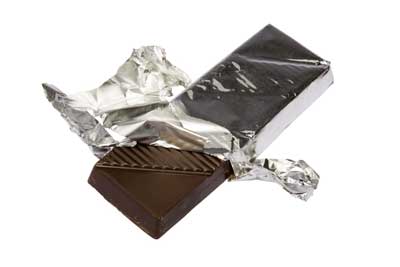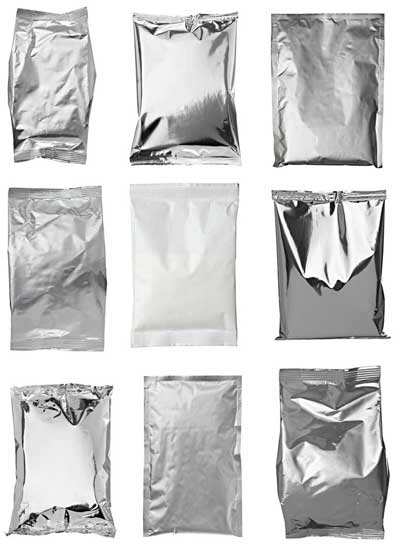

About the Author:
CEO at AlFiPa, responsible for operations as well as purchasing and sales. He is the primary contact for orders and deliveries within the company.
Aluminium foil has been used for more than 100 years especially in the packaging industry. But meanwhile a serious competitor has entered the arena. Metallized PET films cover an ever-growing range of applications, making it one of the fastest growing segments in the flexible packaging market.
At first sight, the two types of films are similar. However, they offer very different properties, making each of them more or worse suitable depending on the applications.
Properties of aluminum foil
Aluminium foil is usually made of pure aluminium, with an aluminium content of at least 99%. In a series of passes through rolling mills the aluminium reaches the desired thickness.
Very thin foils are double-rolled together in the last step and later, separated again This process produces two kind of natural finishes: the outer side of the foil touching the mill work rolls gets a “bright” finish, while the side contacting the other aluminium foil (foil-to-foil) gets a “matte” finish.
The aluminium is solidified by the cold rolling, becoming hard and brittle. Nevertheless, a subsequent thermal treatment in an annealing furnace makes the films soft and flexible again.

Chocolate wrapping made of Aluminium foil
Aluminium foils with a thickness of about 12-20 µ possess barrier properties. This means that those foils are impermeable to water and gases. Thinner foils cannot guarantee the same 100% barrier properties. However, they also offer barrier properties and ensure that food stays fresh longer because of its light protection.
Aluminium foil is easily deformable without losing its barrier properties.
aluminium foil is physiologically harmless to food. However, acidic, alkaline and salty foods should not be in contact with the film. Aluminum foil is light and resistant to water, water vapor, grease and gas, it reflects light, heat and UV rays and does not charge electronically. Moreover, it is fire resistant and easy to recycle.
For packaging, it is rarely used pure aluminum foil. In most cases, the aluminum foil is laminated with plastic films (eg PET, PE, or PP) or paper. One then speaks of aluminum composite films. Composite films have some advantages over pure aluminum foils, for example, higher resistance to rusts and/or stiffness. In addition, aluminum foil can be painted and printed to meet the requirements of modern packaging.
Aluminium bands can be deep-drawn to produce containers or trays and cans. It then keeps the deep-drawn shape. Aluminum can be bent and folded without losing its barrier properties.
Properties of PET-met film

Coffee capsules are also made of Aluminium
In contrast to aluminum foils, which are made entirely of light metal, metallized PET foils are plastic foils which are only evaporated with aluminium powder in a high vacuum. For this process, it is used pure aluminium in powder form with an aluminium content of at least 99,98%. The films produced this way obtain a metallic shine and thereby achieve a special optical effect.
In addition to the optical effect, the aluminum vaporization serves in particular to improve its barrier effects against vapours, gases and aromas in comparison to non-metallized plastic film. Overall, the metallized PET films are less gas-tight than “real” aluminum foil, but more tear resistant, more flexible and lighter. Also, they are less sensitive to corrosion and not as wrinkle-prone as pure aluminium foil.
You can see through PET-met foils, not through aluminum foils.
PET-met films are made of only 1% of the aluminum that would have been needed for an aluminum foil. Therefore, PET-met is especially interesting as a cost-effective and more environmentally friendly alternative to aluminum.
Metallized PET films are produced by evaporating pure aluminium with an aluminium content of at least 99.98%.
Applications for aluminum foil
Aluminum foils are real all-rounder and can be found in almost all sectors of the industry. Lightweight and yet tear-resistant, aluminum foil can be folded in many ways making it ideally suited for packing and wrapping different kind of products and product shapes.
In the pharmaceutical industry, aluminium foil is used to protect medicines from external influences during transport and storage.
Hardly any material is as versatile as aluminum.
The food industry relies on aluminum foil and aluminum composite foil packaging, benefiting from the good hygienic characteristics and the light and gas barrier properties of th

Pouches made of aluminum and metallized PET film (PET-met). The shining bags are made of PET-met.
e material. In the cosmetics industry a variety of aluminum tubes and spray cans are used.
Above all, the construction industry uses the insulating effect of aluminum foil, for example for insulating sewers, pipelines and complete buildings, as well as the construction of vapour barriers for saunas or cellar walls.
In the energy sector, in particular, the low weight and the high conductivity of the aluminum foil are used to insulate power cables. The telecommunications industry, on the other hand, uses aluminum foil and its special barrier properties to protect fiber optic cables from moisture and to shield communications cables from electrostatic interference caused by electronic devices.
Applications for metallized PET-film
Metallized PET films are an ideal solution for all applications that require the preservation of flavour and freshness. It is suitable for many applications in the packaging industry as well as for applications in the technical and industrial sectors.
PET films have particular advantages where the higher gas tightness of the aluminum foil is not required.
If high gas tightness or opacity is important, better use aluminum foil.
Metallized PET film can be printed like aluminum foil, and it results in a variety of optical variants. The gloss level of metallized PET film is much higher than for aluminum foil, so with metallized PET film you can achieve a stronger mirror effect. This is also used when printing – for example, without a white primer, yellow colour shimmers gold.
Therefore, PET met films offer an ideal opportunity to combine certain protective and barrier functions with an attractive appearance – even if the protection of the food is not quite as high as with real aluminum foil and the shelf life may need to be shortened.
In combination with other materials, for example, PET met foils are ideal for snacks packaging, thermoformable container covers such as yogurt cups or refill bags for cosmetic products. Coffee and pet kibbles remain dry in those PET packaging and retain their full aroma and flavour for a long time.
For tomatoes, better use PET-met film instead of aluminium foil!
In the particular case of acidic, alkaline or salt-containing foods, metallized PET films are a perfect substitute for aluminium foils, as a longer exposure or a large contact area of aluminium with those materials can release potentially harmfuls emissions of aluminium into the edible content.
Insulation systems, for example for insulation against heat radiation in buildings or against heat conduction in vacuum insulation panels, can also be realized with metallized PET films. In addition, PET met films can be used for decorative adhesive tapes. Labels made from metallized PET-film are highly resistant to heat and chemicals, which ensures a long-time durability.
Are you looking for the perfect packaging material?
We are happy to help. Contact us!
